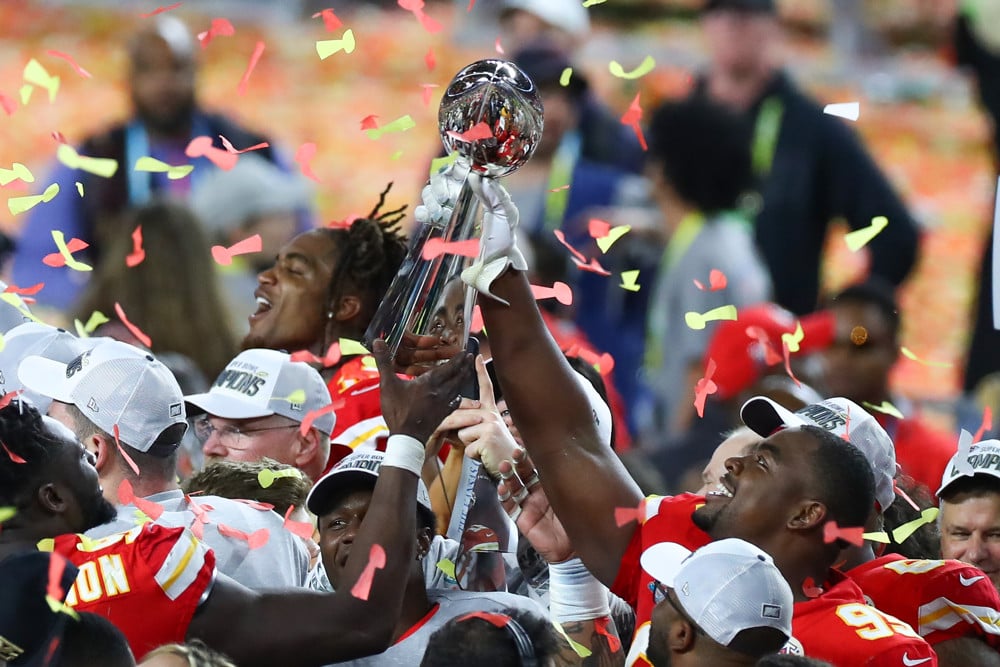You want to win $1 million playing fantasy football? Yeah, me too.
DraftKings’ weekly NFL Milly Maker remains the flagship DFS tournament. It’s a unique event because it often has close to 200,000 entries, roughly 30% of the prize pool is awarded to first place and someone becomes a millionaire off of a $20 buy-in.
So how do we win it? By picking the right players, dummy! Of course, that’s first-level thinking and not a real or thoughtful strategy. Obviously we can lazily say we just need to pick the best players.
DFS Optimizer? We do not have an optimizer, but we have a promotional deal with FantasyLabs. For $30 per month, you will gain access to their optimizer and it will come pre-loaded with both our projections and our ownership projections. Click here for details.
But there’s a lot more strategy we can optimize in terms of lineup construction, salary allocation, flex usage, correlation and ownership. If we can understand what wins this tournament, we can build a repeatable process that raises our chances of shipping.
Thanks to our friends at Fantasy Labs and their Contest Dashboard, I was able to examine the Top-10 lineups in each low-stakes, regular-season DraftKings NFL Milly Maker over the last three years. That resulted in an examination of 452 teams.
WHAT I FOUND:
1. No Edge In Leaving Money On Table
You’ll hear a lot of people say that you should not spend the full $50K cap because that’s what everyone does. The data doesn’t agree. Among the last 452 NFL Milly Maker Top-10 finishers, 48% have used the entire salary cap. Meanwhile, just 42% of the field has done so. As you’ll see below, there’s no real edge to be found in strategizing for total salary used. We will find other ways to maximize our uniqueness and upside.
Top-10 Teams:
* 48% used entire $50K of salary cap, 42% of field did
* 24.8% used $49.9K, 22% of field did
* 11.2% used $49.8K, 12.1% of field did
* 6.4% used $49.7K, 7.3% of field did
* 3.5% used $49.6K, 4.4% of field did
* 5.3% used $40K-$49.5K, 8.6% of field did
* 0.7% used less than $40K, 3.6% of field did.
2. Only 9% of Top-10 Teams used TE in flex
Going with a “double TE” roster construction is unique as only 13% of the field does it. But that doesn’t mean it’s right. With only 9% of Top-10 teams using a tight end in the flex, we’re showing a negative expectation.
The best leverage can be found by using RBs in the flex, as 58% of Top-10s did it vs. 52% of the field. In terms of WRs in flex, the Top-10s were in line with the field as both were around 33%.
Editor’s Note: The NBA returns July 30! We’re launching a new product led by Drew Dinkmeyer, Mike Gallagher and Andrew Wiggins. It will include Tiered DFS Top Plays, Live Shows, continuously updating Depth Charts, Matchups articles and tons more. Click here for more details.
3. Stack, stack and stack more
The field still does not stack nearly enough. All Milly Maker entries went “naked QB” aka “zero teammates of a QB” a whopping 17.4% of the time. But Top-10 lineups went naked QB just 6.4% of the time. We can gain a big edge on the field simply by never (or rarely) going naked at QB.
But the stacking leverage doesn’t stop there. Top-10 lineups used a QB and two of his teammates 41.2% of the time while the field did it just 28.9% of the time. This 2-teammate construction and simply stacking period are our two biggest edges.
In terms of single stacking (one teammate with our QB), the Top-10s did it 49.1% of the time and the field did it 49%. And in terms of a QB with three teammates, the Top-10s (3.3%) actually did it less than the field (4.2%). No Top-10s paired a QB with more than three of his teammates.
4. Yes, we can stack with RBs
It’s a bit counterintuitive to stack a QB with his RB. But it’s worth noting that it can be successful as 22.8% of Top-10s did it, right in line with the field’s rate of 21.9%. Of course, we are ideally using pass-catching RBs in our stacks so that touchdowns aren’t cannibalized. Derrick Henry has three receiving TDs in 62 career games, therefore correlating negatively with Ryan Tannehill in terms of touchdowns.
5. Bring it back stack
In this must-read article for tournament players, Drew Dinkmeyer compared the idea of correlation to magnetic needles in a haystack. It’s obvious that a QB and his teammates have extremely strong correlation, but the opponents do as well. A massive 36.3% of Top-10 teams “brought it back” with one player from the opponent of their QB. The field is catching on, doing it at a 31% rate.
In terms of bigger “game stacks” type constructions, it’s only shown a slight edge. Note that 6.4% of Top-10s brought it back with two opponents vs. 5.9% of the field. And only 0.9% of Top-10s brought it back with three opponents vs. 0.5% of the field.
6. Typically stay under 120% cumulative ownership
We get our “cumulative ownership” by simply adding up all nine players’ ownership. Staying under 125% is best and staying under 150% is a must. Note that just 11% of Top-10s went over the 150% mark — that’s a big no-no. Each week I publish my Ownership Projections in our In-Season Package and keep them updated until lock. The weekly average cumulative ownership of Top-10s was 116.4%.
Here’s the distribution of cumulative ownership among Top-10s:
Sub-50% – 8 teams (1.8%)
50-75% – 46 teams (10.22%)
75-100% – 85 teams (18.8%)
100-125% – 158 teams (35%)
125-150% – 105 teams (23.2%)
150-175% – 43 teams (9.5%)
175+% – 7 teams (1.5%)
7. High-owned, high-priced RBs are often right
Running back is the only position where Top-10 teams averaged more ownership than the field. In other words, the field is getting FPS (fancy play syndrome) at a position where simple volume is the differentiator. At QB and WR though, the Top-10s are significantly more contrarian than the field. The Top-10s’ QBs averaged just 7.7% ownership and WRs 10.9%.
In terms of salary, the Top-10s spent $6.5K or more on RB 49.1% of the time while the field was at just 43.0%. It’s further confirmation that running back is the most projectable position. Running back correlation between ownership and points is 0.55, the highest of all positions.
8. Be willing to go off the board
Only 9.7% of Top-10s had zero players at sub-5% ownership while the field was at 14.7%. We need to be willing to roster guys in that 2-5% range. But that doesn’t mean a roster full of these extremely low-owned players:
Number of Sub-5% owned players by the Top-10s:
Zero – 44 teams (9.7%)
One – 105 teams (23.2%)
Two – 125 teams (27.7%)
Three – 86 teams (19.0%)
Four – 55 teams (12.2%)
Five+ – 37 teams (8.2%)
Note that on average, the Top-10s use 2.3 sub-5% players per lineup (0.7 of which are sub-2%) while the field is at 2.0 sub-5% players per lineup. We want to balance those low-owned players with some higher-owned (especially at RB) to land in the 75%-150% cumulative ownership.
To further this point, it’s worth noting that 8.2% of Top-10s had a whopping five players on their roster at sub-5% ownership. The field had these extreme low-owned constructions at just 4.7%.
9. It’s OK to mix in some chalk
Top-10 lineups averaged 1.9 players per lineup at 20% or higher ownership. And as explained in No. 7 above, the RBs of top-10 teams averaged 18.4% ownership. The most projectable upside comes at running back. It has the highest correlation between salary and points. On the other hand, wide receiver and tight end are the least predictable and have the lowest correlation of salary to points. The average ownership of Top-10s at QB were just 7.7% and TE 11.6%.
10. Punting at QB shows an edge
The Top-10s rostered a sub-$6K QB 45.4% of the time while the field was at just 38.4%. That subset showed a bit more value than the $6K-$6900K bin, where Top-10s were at 44.7% and the field was at 48.1%. Note that the Top-10s used a $7K or more QB just 10% of the time while the field was at 13.5%.
11. Be contrarian at D/ST
Here are the correlations between Milly Maker ownership and DraftKings points:
RB: 0.55
QB: 0.53
TE: 0.48
WR: 0.47
DST: 0.21
As you can see, the field is very bad at predicting D/ST scoring. It’s simply an unpredictable position because turnovers, special teams TDs and defensive touchdowns are very hard to project. The average ownership of Top-10s at D/ST is just 9.4%.



